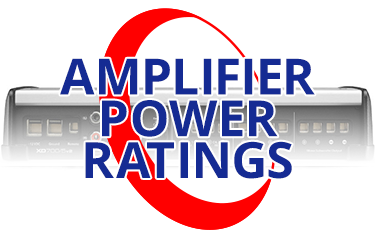Free Shipping*
Lower 48. Orders over $100.
2 Year Warranty
On all our radios.

Your cart is currently empty.

If you are in the market for an amplifier, you have probably noticed that the ratings are all over the place. You will see a 1000 watt amplifier for $200 from some off-brand, and then see another 1000 watt amp from the likes of Rockford Fosgate, JL Audio, Kicker, etc. and the amp maybe 3-4 times that amount. Why is that? What is the difference?
No Widely Accepted Standard
When it comes to amplifier ratings, there really isn't a standard or guideline that determines how many watts that amplifier will put out. There isn't a UL test spec, documentation, or standard that must be adhered to in order to determine that power rating. This is why you can see a 2500 watt amp that is only 13"x11"x2" and another one that is as long as a football field. Chances are, that small 2500 watt amp, isn't an actual 2500 watt amp. They can get away with it because they have testing that shows that the amplifier can or did put out 2500 watts at some point, but that is peak power, under rare conditions, that probably will never exist while you are driving your vehicle and enjoying your music.
Trust the Trusted Brands
There are some brands such as Rockford Fosgate, Kicker, and JL that list the CEA-2006 power rating of their amplifier. This is the general standard that many companies have adopted to allow customers to compare products, apples to apples. The CEA-2006 standard tells you the power output at 14.4 volts, with less than 1% total harmonic distortion, and with a 4-ohm load. For the most part, this tells you what you are actually getting and paying for. If it doesn't have a CEA-2006 standard listed, it probably means that it was tested using the MSU (Make $#!& Up) method.
How is the power output determined?
The power output on a full-range (2 or 4 channel) amplifier must maintain between 20-20kHz. An amplifier's power output and a car's horsepower output are totally different. If you have ever seen a car on a dyno, you know that they rate the horsepower rating at the peak during the RPM band. So, your car may have 500 horsepower, but for the most part, when you are driving, it rarely hits 500 hp of actual output. The same is not true with CEA-2006 compliant amplifiers. If you rated a car's horsepower how you rated an amplifier, that 500 hp vehicle would probably be rated at 200 hp because that is what you are actually getting through the usable powerband.
Copyright © 2026 ClassicCarStereos.com